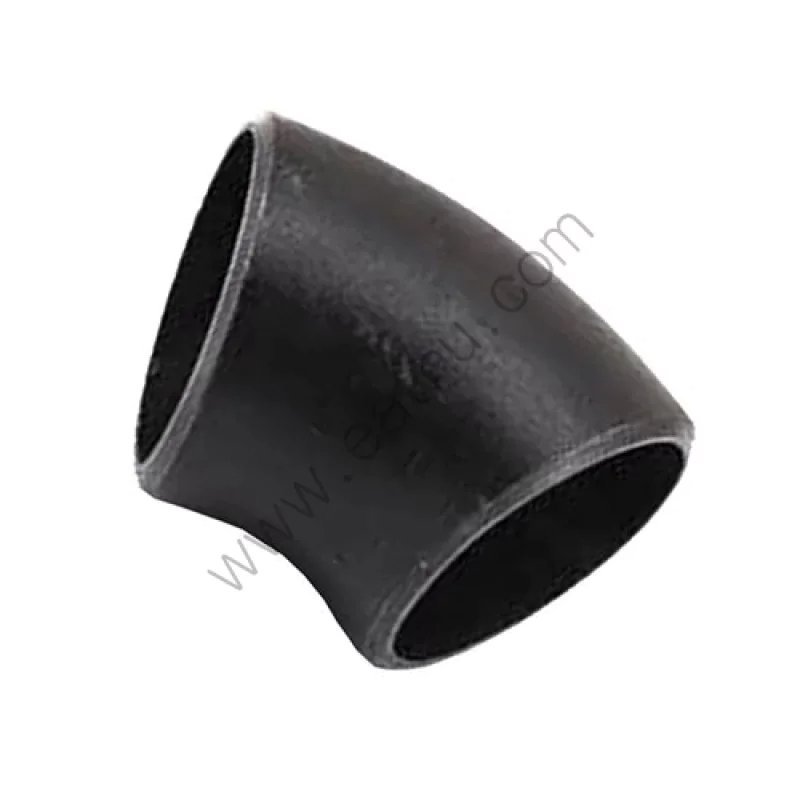Export Office: 21Floor, No.5 Nanhai Zhi Road,Qingdao, Shandong ,China
Work Shop: Beian Industrial zone, Qingdao,Shandong,China
+86 532 88256399
Martin
Inquiry now
Pipe bends and pipe elbows both serve the function of changing the direction of fluid flow, but their design characteristics and applications differ significantly. This article explores the definitions, design characteristics, and key differences between pipe bends and elbows.
Pipe bends are segments of piping that are specifically designed to change the flow direction of a fluid while maintaining a continuous flow path. They are typically manufactured in various angles and radii, allowing for greater flexibility in designing piping systems. They come in various lengths, and the curvature is typically gentler than elbows, minimizing flow resistance. Among the notable products available is the 3D & 5D Bends, which offers unique benefits for specific applications.

Pipe elbows, on the other hand, are fittings that are used for changing the direction of flow with more pronounced angles. Common angles for elbows are 22.5°, 45°, and 90°, each serving different directional needs. The 45 Degree Elbow LR, for example, is designed to provide a gradual transition with lower pressure loss compared to sharper angles. Elbows are available in different materials and types, such as threaded or welded, and are integral in ensuring that piping systems can route fluid efficiently.

Pipe bends are known for their curves that typically have a radius to reduce turbulence and pressure drop effectively in high-speed scenarios where preserving flow efficiency is vital. These bends are available in standard and custom angles to give designers options when dealing with piping configurations.
In the realm of pipe bend classifications lie types such as bends and elongated radius bends along with tailored choices tailored to suit project demands as needed for customization purposes. The capability to tailor bends based on distinct fluid dynamics specifications proves to be a notable benefit that guarantees ideal flow attributes.
Pipe elbows possess design characteristics that distinguish them from bends in piping systems. By incorporating predefined angles such as the 45-degree Elbow LR for changes and catering to immediate turns in various applications. These fittings are versatile with options for threaded socket weld and butt weld end types. Manufacturing pipe elbows typically results in a space design ideal for compact spaces. Yet this might result in increased pressure loss and turbulence compared to bends.
To sum it up pipe bends and elbows play roles in the piping industry. Their uses, structures, and features differ greatly. The decision between a pipe bend and a pipe elbow, mostly hinges upon the needs of the conveyance system under development.
Pipe bends are commonly used in situations where there is a need to make changes in direction while keeping pressure loss and fluid turbulence to a minimum. In large industrial settings like refineries and power plants with extensive piping networks that require smooth transitions for optimal performance and durability. The gentle curves of pipe bends play a role in facilitating flow efficiency and are ideal for transporting various materials such as water, oil, and gas with ease. The flexibility in angles also enables engineers to manage piping configurations without having to make modifications, to the overall layout.
On the other hand, pipe elbows are often used in places where sharp changes in direction are important, especially in smaller industrial, residential, and commercial piping systems. They are commonly used in plumbing, drainage, and irrigation systems that need turns. Elbows with angles of 22. 5°, 45°, and 90° help join sections of pipes to enable shifts in the flow direction that align with the operation of the system. They are created to easily fit into spaces where bends might not be possible and enhance their usefulness further.
1. Minimizing Resistance Effectively: effectively reduces fluid flow resistance compared to other options.
2. Reduced Turbulence: The gradual curve helps lower turbulence and pressure drop levels.
3. Decreased Strain: Decreases the stress on pipelines and downstream equipment
4. Design Flexibility: Engineers can customize angles and radii for specific project needs.
5. Efficiency and Dependability: users enable select materials that optimize workflow efficiency and dependability.
1. Size and Flexibility: Ideal for limited spaces in home plumbing and small industrial setups.
2. Directional Changes: It is easier to set up in confined spaces
3. Reliability: Provides dependability in fluid dynamics assessments.
4. Reduced Pressure Loss: Engineered to minimize pressure decreases and accurately assess flow velocities.
Limitations of pipe bends:
1. Space Consumption: Require more space due to their gentler curvature, which can be an issue in tight areas.
2. Material Costs: The longer length of bends may lead to increased material expenses.
Limitations of pipe elbows:
1. Pipe elbows can cause turbulence and pressure drops.
2. Wear Prevention: Design and application considerations are crucial for preventing risks
When deciding between pipe bends and pipe elbows for a piping system needs depends on factors, like space and the fluid being transported characteristics, and flow rate requirements to determine the most suitable fitting option. Professionals need to evaluate each scenario and consider the pros and cons of each type of fitting available.
QINGDAO FLUIDO provides various types of pipe bends with different materials, length, sizes, and pipe elbows with different angles like 22.5 degree, 45 degree, 90 degree and 180 degree. Butt welding pipe elbows forged pipe elbows with different materials like carbon steel and stainless steel. Contact our engineer or sales department to know more about pipe bends and pipe elbows:info@eathu.com
Export Office: 21Floor, No.5 Nanhai Zhi Road,Qingdao, Shandong ,China
Work Shop: Beian Industrial zone, Qingdao,Shandong,China
+86 532 88256399
Martin
© 2020 Qingdao Fluido Industrial Co.,Ltd. All Rights Reserved. Qingdao fluido valve

